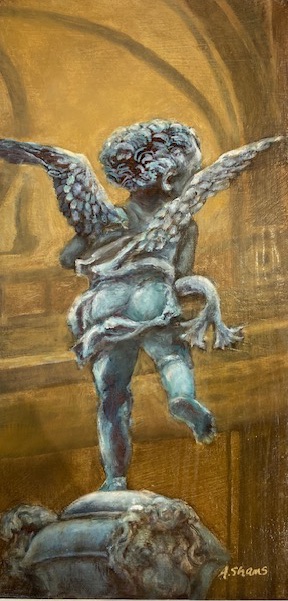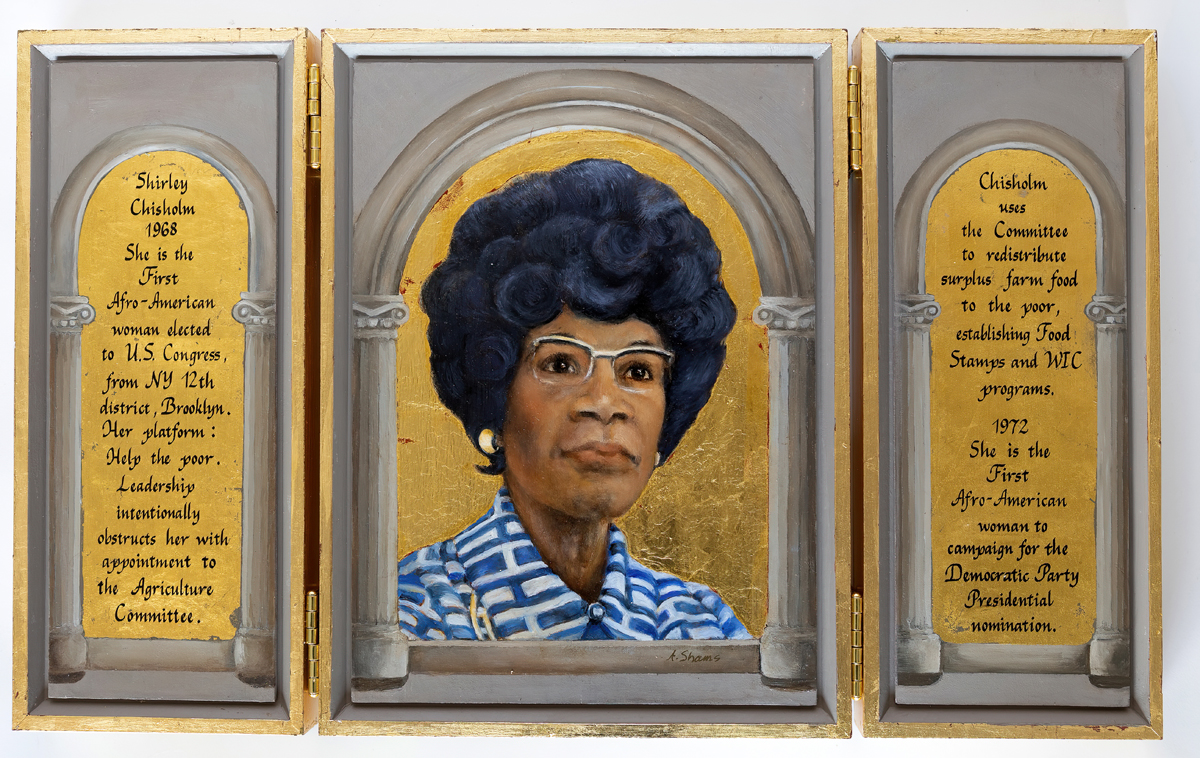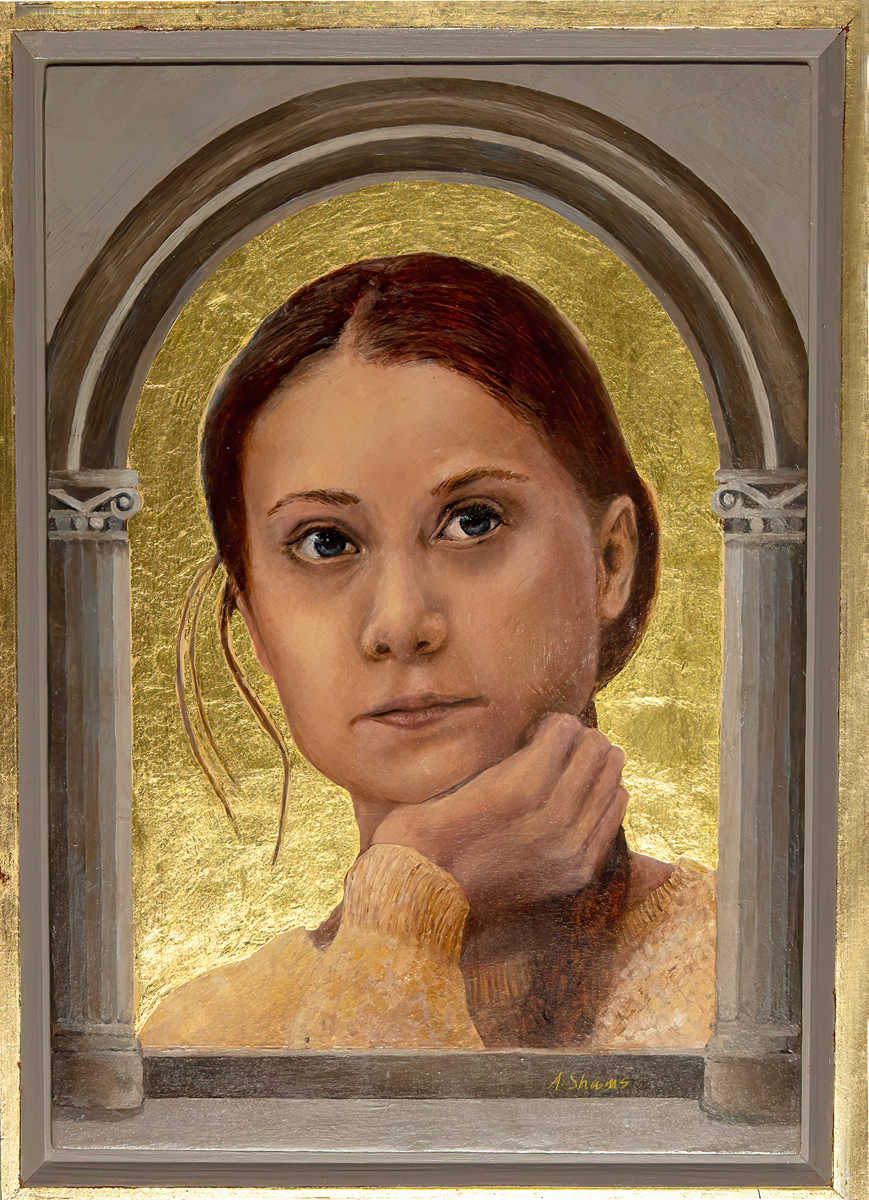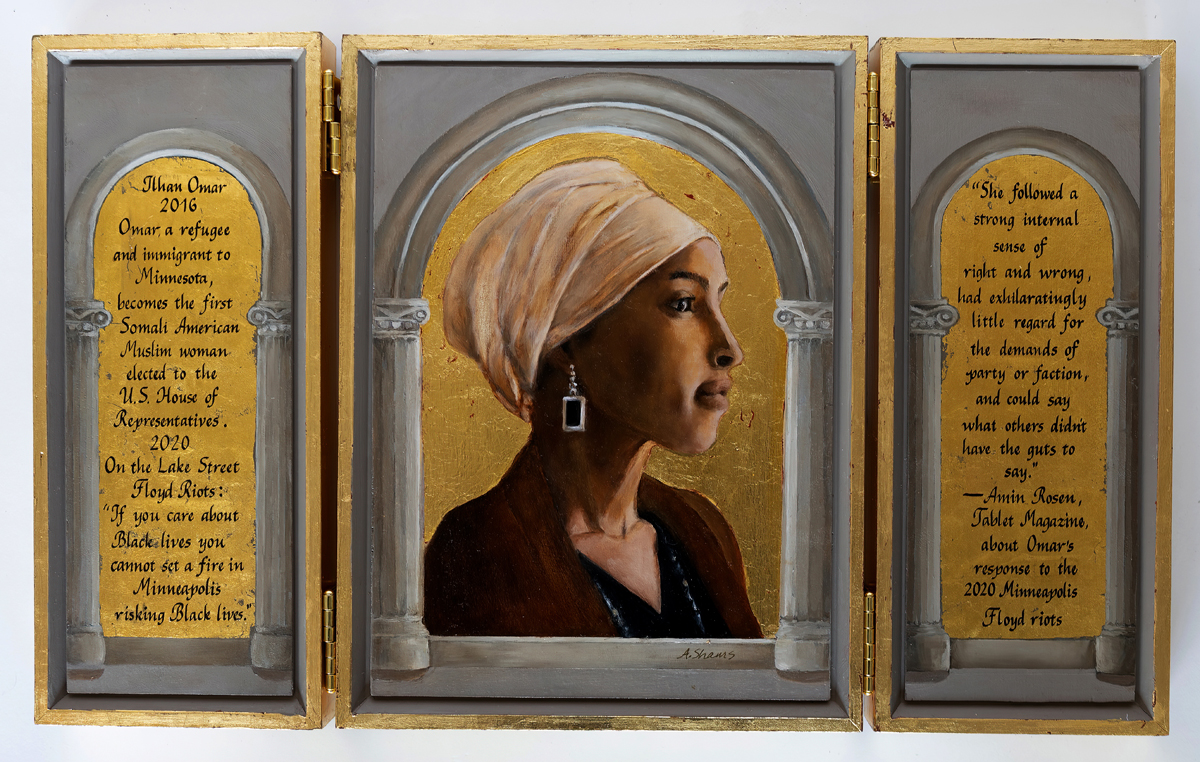Anne Shams
 About the Artist
About the Artist
Anne Shams studied for a year at the University of Padua in Italy, then graduated from the University of California at Santa Barbara with a Bachelor of Arts, Painting Emphasis.
After graduation she experienced a bout of depression that prompted her to begin a practice of meditation, journaling and painting as therapy. She soon found herself experiencing images that she later learned were archetypal.
The combination of meditation, journaling and painting has remained for her a soul expression. Her work is untethered to any specific religious tradition, yet is grounded in essential concerns of peace, justice and the environment.
Her work has been exhibited nationally and published in Faith and Form, the sacred sector journal of the American Institute of Architects.
Oregon’s Regional Art and Culture Council awarded her a grant to create art for and curate the exhibit, The Wilderness Journey, that illuminated the common ground in the three expressions of the Abrahamic faiths.
The Canton, Ohio Museum of Art chose her work for the exhibit, Sacred Voices.
The Jerusalem Fund Gallery of the Palestine Center in Washington, DC exhibited Al-Andalus; Pardes/Paradise: her paintings and morsels of poetry that celebrate the glorious progeny begat by the co-mingling of Jewish, Christian and Arabic cultures in Andalusia, Spain from 755 to 1492.
OnCaravan chose her to contribute to the project, Amen a Prayer for the World, exhibiting at St. John the Divine in New York City, and The National Cathedral in Washington, DC.
Portraits of Inspiring Women in the Classical Style
My passion for this series of 12 portraits was ignited by an April 2017 New Yorker article by Kathryn Schulz about Pauli Murray, Saint Pauli: She advanced two movements for equality—and was at home in neither. Pauli Murray was a woman at the intersection of race and gender and the struggle for equal rights.
I hoped for luminous portraits that illuminated each woman’s inspirational life. I admired the light in the portraits painted in the classical style.That led me to study the elements of classical painting typical of techniques used by the painters of the 14th through 16th centuries: composition using the golden rectangle, preparatory drawing, underpainting in grisaille or monotone sepia, oil paint on birch panels, and gold leaf.
I wanted to honor each woman with texts by or about her life. I adapted the form of the icon tradition because it has been used historically to tell stories.Each portrait is in triptych format. The central portrait is accompanied by calligraphed panels on either side.
Although each portrait began with my intent to portray the woman’s most essential individuality as beautifully and compellingly as I could, I was transported past admiration to fall in love with every woman.
The 12 women are: Pauli Murray, Alla Renée Bozarth, Ruth Bader Ginsburg, Greta Thunberg, Rachel Carson, Margaret Sanger, Shirley Chisholm, Dorothy Day, Ilhan Omar, Debra Haaland, Sarah Winnemucca, and Maya Angelou.
Artist Statement
Recently I’ve been calling my paintings “Icons for the 21st Century.”
Traditional Icon Writers might object to that. But I’m hoping to deserve my use of the name because traditional icons are paintings that record, illuminate and celebrate holy stories.
I’ve told stories with my art almost since the beginning of my first drawings and stories about Raggedy Anne. I had rheumatic fever when very young and had a near death experience. I knew rheumatic fever was dangerous for your heart. Raggedy Anne had two hearts. She was my exemplar and companion. Her story was, for me, a holy story because she taught me how to live courageously, joyfully and lovingly.
My Icons for the 21st Century are untethered to any specific religious tradition, although they often refer to the spiritual and moral teachings that have common ground in religious traditions. I am very drawn to teachings about the polarities of power and compassion and find, for example, that both the Jewish mystical tradition and the Islamic mystical tradition are both deeply concerned with the balance of love and power. Each teaches that compassion is fundamental to justice, and beauty is fundamental to sustaining life.
I have tried metaphorically to illustrate these teachings in some of my paintings. An example is “Fire at Heaven’s Gate,” which was inspired by Brent Walth’s biography of Oregon Governor Tom McCall and his determination to safeguard Oregon’s landscape from greedy development.
I intend for each painting to be beautiful. Their enjoyment and beauty does not depend on knowing their symbols, metaphors or stories any more than enjoying a landscape painting depends on knowing geology and the earth sciences. Our emotional and physical resonance to nature and art is part of us.






